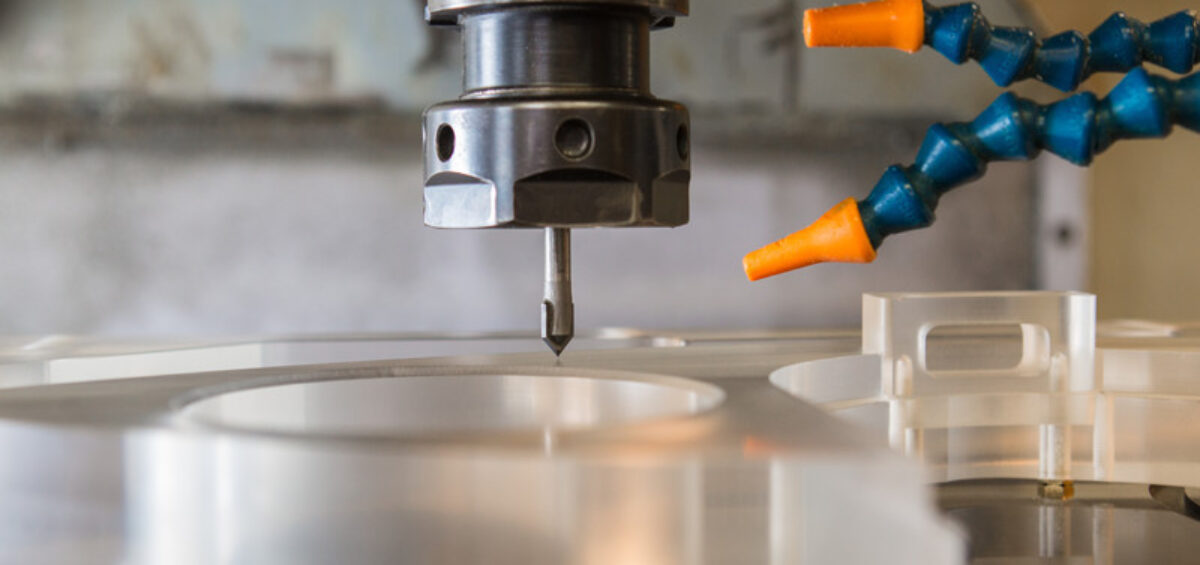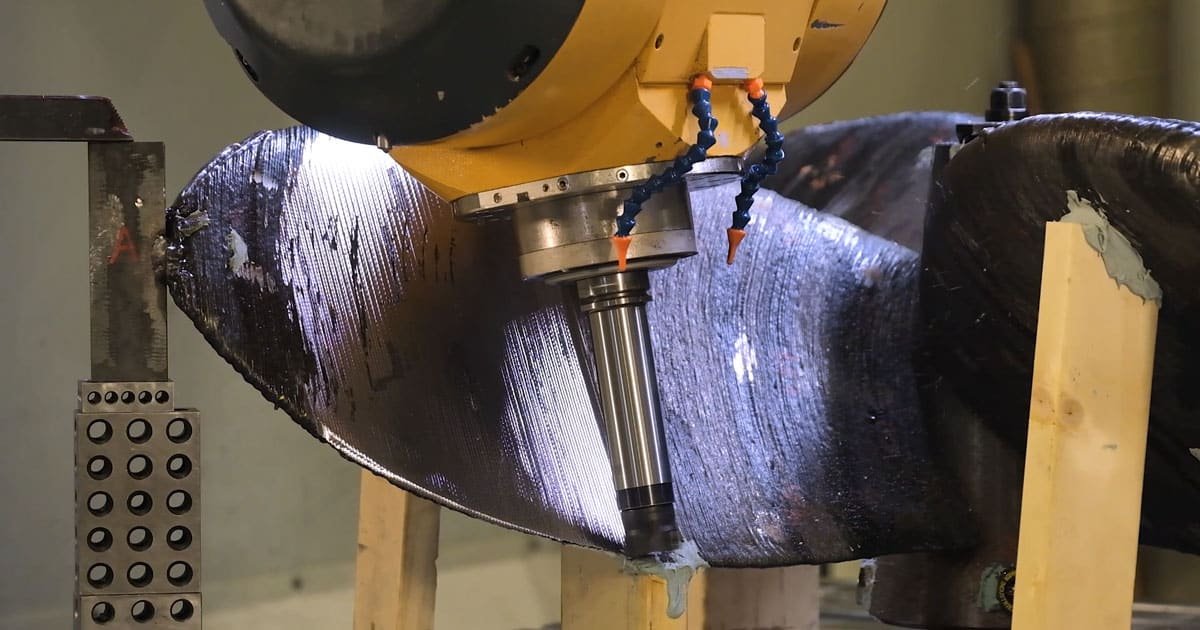
Deciding about the right mill for your job? Confused about whom to choose for particular material and surface finishing? It can be difficult for you to select the appropriate end mill for a certain operation., many factors come into play while making decisions like type of material, geometry, grooves depth, and design while keeping the surface finishing, quality, aesthetics, and tool life in mind.
Are the end mill and drill bit being same? Most people confused drill bits with end mills, the end mill is used to make aesthetics, grooves, profiles, and in-depth cuttings, while the drill is simply used to plunge the holes in the workpiece, they are simply used for making holes. By outlining all the elements that will affect your decision, the article dispels any uncertainty you may have about selecting the best mill.
- The material you want to mill.
- The geometry you want to design.
- Do you need complex groves and Profiles?
- What you are accepting in terms of quality, surface finishing, and cost-effectiveness?
You will have a clear concept after these answers, for what type of geometry or surface finishing you will get, still, if you are not sure which service will be best for you? You can contact us any time, our experienced and highly expert staff is always available to assist you, and you can get a free consultation regarding our services and products. Baichuan is the leading CNC machining service provider in China, we have millions of satisfied global customers with us.
Types of End mill:
In broader prospect end mills are categorized as central cutting and non-Centre cutting, it depends upon whether it make plunging cuts or not, for machining purpose they
are divided as
Straight flute mill:
As the name represents a straight flute Mill has basic and straight profile flutes, with zero helix angle and they are ideal for machining with soft materials like plastic, and glass rubber and they give excellent surface finishing in it.

Up and Down-Cut End Mills:
These types of mills are spiral in shape, these spiral keeps the cutting material away from the working spot the up-cut spiral gives a rough finishing while keeping away the material chips while the down-cut spiral gives the smooth surface finishing. These mills are excellent while working with soft materials which give extra chips like aluminium and plastic.

Ball-Nose End Mills:
Ball end Mills are round in shape and they are used for Complex 3D model geometries they can be single-ended or double-ended and are mostly used for grooving for full radius or profile milling.

V-Bit End Mills:
These types of end mills are used for V-shaped carvings in the workpiece they are ideal for in-depth grooves, especially for V carvings. These v-carvings range from 60 degrees to 90 degrees. The tip of these end mills is thinner while the ending sides are thicker, the tape is used for narrow cuts, and engravings bottom side are used for large and in-depth profiles. These mills are ideal for corner radiuses and edges.

Other parameters which affect the decision of choosing an end mill are geometry, the number of flutes material to be machined, the material of tool along with surface finishing, and precision they all are discussed here.
Geometry & Basic Concepts:
The quality and cutting performance of an end mill can be figured out through its shape and geometry, some of the deciding factors of the end mill are
- Overall length
- Flute angle
- Shark diameter
- Helix angle
- Number of flutes
- Cutter diameter
Other than these parameters, end mill material, its coating, hardness, and mechanical expertise of operators are the deciding factors for having a smooth profile.

Overall length:
If you are working with very deep cavities or groves, it is convenient to use longer endmills, you will need a longer tool that can machine your workpiece without damaging your spindle mandrel its overall length is the deciding factor in how deep it can be operatable in your workpiece. Technically it is known as “stick out” it's the distance from the tool holder to the end of your end mill.
Further, if you are working with deep cavities, you should take that in mind your cutting diameter and length must not exceed the flute length of the end mill, as it may cause rough grooves and profiles. Secondary, the overall temperature of the end mill may get increase which can damage your tool.
The geometry of the tool is such that it can be operatable in multiple dimensions but keep that in mind the stick out of your tool must have an appropriate length as the longer tools are a less rigid and they may be deformed by working force.

The tool deflection can be very problematic in certain ways
- It may cost chatter which is vibrations during cutting
- It may result in poor surface finishing
- The lifetime of your tool may decrease
- Low precision and tolerance
- The overall temperature of the working may increase
- It may cause trouble during material chip removal.
The number of flutes for the appropriate job:
The upper portion of the tool has deep grooves that help in cutting and evacuation of chips these groves are specifically designed as per the condition of the workpiece its material geometry, surface finishing, and feed rate. Precision and smoothness of the
workpiece are the factors which directly affected by the flutes of the end mill
- The feed rate directory depends upon the number of flutes
- It affects the surface finishing of the workpiece
- It defines the precision and tolerance of the word piece

The increase in the number of flutes results in surface finishing and high spindle speed but it may cause trouble in removing the chips which jam the process and increase the temperature of the machine secondary the number of flutes has direct effects on feed rate a greater number of flutes causes less feed rate and high spindle speed. So,
It is always advised to choose appropriate flutes as per required conditions. For example, aluminium leads to more chips during cutting, while brass produces fewer chips, so it is advisable for aluminium to use a tool with 2 to 3 grooves.
Helix angle:
After the number of flutes, the helix angle is the second most important thing for better surface finishing and in-depth grooves, mostly helix angle ranges from zero to 80 degrees and the normal figure is 30 degrees, the greater the helix angle greater the smoothness and surface finishing with less cutting force and mechanical vibrations while on the other hand, it decreases the strength of the tools .Those tools Which have helix angle more than 40 Degrees are not suitable for in-depth grooves and profiles.

Tools having low helix angles are harder and ideal for in-depth grooves, but they result in more cutting force and poor surface finishing. In conclusion helix angle is something that is determined according to geometry and goals related to the workpiece.

The clockwise motion of the spindle and the helix angle of the tool determines the ejection of the chips whether they move in an upward direction or towards the downward direction, these are mostly done in up-cut machines these machines can move the chips away from the working spot which is a necessity of the end mill for smooth processing. Down cut option is also available for better surface finishing. Down-cut mills give your cleaner cut at the top while pushing the chips downwards.

Beside the up-cut and down-cut flute angles we have another option of helix angle known as compression cutter. In a compression cutter, the flute length of the workpiece is divided into two helix angles, the Flutes are differently angled at the bottom and oppositely angled from the beginning, you can have a clear view from the above-mentioned picture, this feature makes them ideal for cutting plywood composites and laminates and it gives smooth edges, grooves, and corners.

End mill materials:
End mill materials are something that is decided according to the conditions of the workpiece, surface finishing, and geometry. There are a lot of materials that are decided as per their durability rigidity long-life, surface finishing, precision, and accuracy.
Most industries use high-speed Steel and carbide tools for various operations as both of them have excellent machining results on the one hand high speed Steel is cheaper durable and has high strength ratio, it gives good surface finishing and is ideal for an in-depth cutting, while on the other hand carbide it is an excellent material for smooth surface finishing but it is a little bit expensive than high-speed Steel.
if you are working in an environment where you have to produce bulk material you should consider carbide as it is 2 to 3 times faster than HSS and it gives extra strength and life tool. Knowing the geometry and the material of the workpiece narrows down your decision regarding the end mill. Every material and geometry need specific material that can machine him, for example, plastic material does not require a tool to be high strengthen whereas HSS required that.
Furthermore, increasing the efficiency and performance of machining tools may subject to the surface coating that results in increased rigidity strength and performance of the tool most famous surface coatings used are Titanium and aluminium nitrate.

In conclusion appropriate helix angle, number of flutes, material selection and end mill type all these factors decides the geometry of workpiece. At Baichuan we have high-quality miniature end mills that support tool Optimisation for materials like carbide, high-speed steel, stainless steel, exotic alloys, plastics, higher abrasive materials, and composites. If you are looking for specific material machining or want to work with a wide range of materials, we have different categories of services available for you can get a free consultation regarding optimal machinery and end mill selection from our expert engineers at www.bccmilling.com.
Here, we discuss some of the famous questions regarding end mill selection.
Q: How many flutes are ideal for Machining?
Number of flutes depends upon the machining process and the materials which are to be machined.
Material: For non-ferrous metals, most 2 to 3 Flutes are ideal for machining as it results in highly efficient milling and excellent chip clearance, for ferrous metals 3 to 14 flutes are optimal according to operations being performed.
Roughing: Roughing required a large number of flutes as more flutes result in more content of material with the tool, mostly 3 to 5 fluids are ideal for it.
Slotting: 4 flutes are ideal for slotting as they support more chip clearance, for more than that flute may cause disturbance in chip evacuation.
Finishing: The flute for the finishing process depends upon the material to be processed generally for finishing 6 to 14 flutes are used as per cutting speed and cutting diameter.

Q. How the feed rate of an end mill is determined?
Feed rate mostly depends upon the cutting speed, cutting diameter, material to be machined, tool toughness, and rigidity. The appropriate feed rate is 0.1 during finishing and it ranges from 0.25 to 0.4 mm. Moreover, it also changes with the geometry, for in-depth radial and axial cuts feed rate is less.
Q. Are coated tools more beneficiary?
Coated tools increase the performance and feed rate of the end mill it gives the following benefits
- Increase the tool life
- Increase in cut-cutting speed
- Better surface finishing
At Baichaun we have a variety of tool coatings available according to specific materials. For ferrous metals, we prefer AlTIN Nano or TPLUS which overall increases the thermal conductivity of the material and make them ideal for working at high temperature. For nonferrous metals, TiB2 or ZPLUS are best as they decrease the frictional coefficient of the material. CVD diamonds are also famous for abrasive materials due to their high strength ratio.









